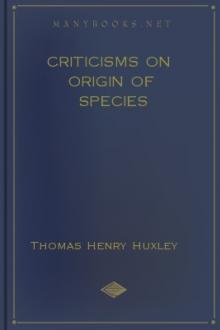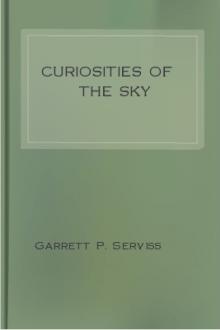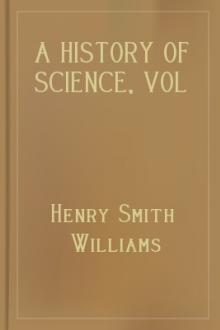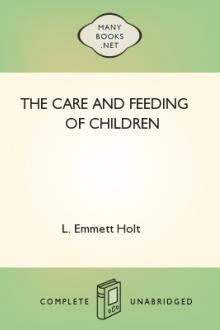Genre Science. Page - 3
No registration or authorisation! And it is all for free!

f uraei and cartouches107. Wall-scene from temple of Denderah 108. Obelisk of Heliopolis, Twelfth Dynasty 109. Obelisk of Begig, Twelfth Dynasty 110. "Table of offerings" from Karnak 111. Limestone altar from Menshîyeh 112. Wooden naos, in Turin Museum 113. A mastaba 114. False door in mastaba 115. Plan of forecourt, mastaba of Kaäpir 116. Plan of forecourt, mastaba of Neferhotep 117. Door in mastaba façade 118. Portico and door of mastaba 119. Plan of chapel, mastaba of Khabiûsokari

all the parts of thewatch to the function, or purpose, of showing the time, is held to beevidence that the watch was specially contrived to that end; on theground, that the only cause we know of, competent to produce such aneffect as a watch which shall keep time, is a contriving intelligenceadapting the means directly to that end.Suppose, however, that any one had been able to show that the watch hadnot been made directly by any person, but that it was the result ofthe modification of another

S. Monthly Notices_, 1900.[2] _R. A. S. Monthly Notices_, Sup.; 1905. [Illustration: CHALDÆAN BAKED BRICK OR TABLET, Obverse and reversesides, Containing record of solar eclipse, 1062 B.C., used lately byCowell for rendering the lunar theory more accurate than was possibleby finest modern observations. (British Museum collection,No. 35908.)] [3] _R. A. S. Monthly Notices_, vol. x., p. 65. [4] R. S. E. Proc., vol. x., 1880. 2. ANCIENT ASTRONOMY--THE CHINESE AND CHALDÆANS. The last section must

ena under varied circumstances, and endeavour to deduce the laws of their relations. Every natural phenomenon is, to our minds, the result of an infinitely complex system of conditions. What we set ourselves to do is to unravel these conditions, and by viewing the phenomenon in a way which is in itself partial and imperfect, to piece out its features one by one, beginning with that which strikes us first, and thus gradually learning how to look at the whole phenomenon so as to obtain a

aphs, particularly those of the singular regionaround the star Rho Ophiuchi. Here are to be seen somber lanes andpatches, apparently forming a connected system which covers an immensespace, and which their discoverer thinks may constitute a darknebula.'' This seems at first a startling suggestion; but, after all,why should their not be dark nebulæ as well as visible ones? In truth,it has troubled some astronomers to explain the luminosity of thebright nebulæ, since it is not to be supposed that

out it. It is not the best looking thing, but the bestacting thing, which is the most advantageous to us. This good-lookingcandle is a bad burning one. There will be a guttering round about itbecause of the irregularity of the stream of air and the badness of thecup which is formed thereby. You may see some pretty examples (and I trustyou will notice these instances) of the action of the ascending currentwhen you have A little gutter run down the side of a candle, making itthicker there than it

ation ofgeneral ideas or principles. In the familiar definition ofHerbert Spencer, science is organized knowledge.Now it is patent enough, at first glance, that the veriest savagemust have been an observer of the phenomena of nature. But it maynot be so obvious that he must also have been a classifier of hisobservations--an organizer of knowledge. Yet the more we considerthe case, the more clear it will become that the two methods aretoo closely linked together to be dissevered. To observe

ut onemonth; in winter, when about three months old, on pleasant days, beingkept in, the sun and out of the wind. What are the best hours for airing out of doors? In summer and early autumn a child may be out almost any time betweenseven in the morning and sunset; in winter and early spring, a youngchild only between 10 or 11 A.M. and 3 P.M., although this dependssomewhat upon the climate. In New York and along the Atlantic coastthe early mornings are apt to be damp and the afternoons raw

s," he said. "The same thing we talked about last month. But why were we tipped off in advance?""It's one more piece in the pattern," I said. "If the tip's on the level, then they're stepping up the program." Within three days, reports began to pour in--from Peru, Cuba, Mexico, Turkey, and other parts of the world. Then on March 9 a gleaming metallic disk was sighted over Dayton, Ohio. Observers at Vandalia Airport phoned Wright-Patterson Field. Scores of Air

year 1777, you informed me of the great success you had met with in curing dropsies by means of the fol. Digitalis, which you then considered as a more certain diuretic than any you had ever tried. Some time afterwards, Mr. Russel, surgeon, of Worcester, having heard of the success which had attended some cases in which you had given it, requested me to obtain for him any information you might be inclined to communicate respecting its use. In consequence of this application, you wrote to me in